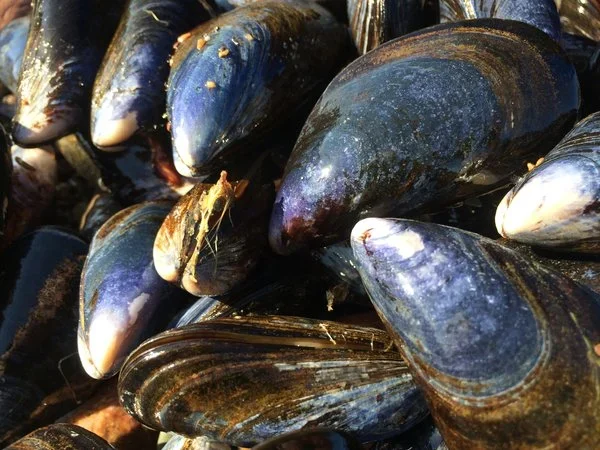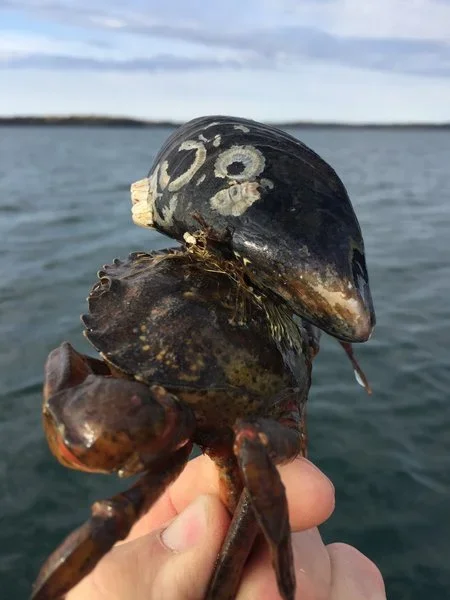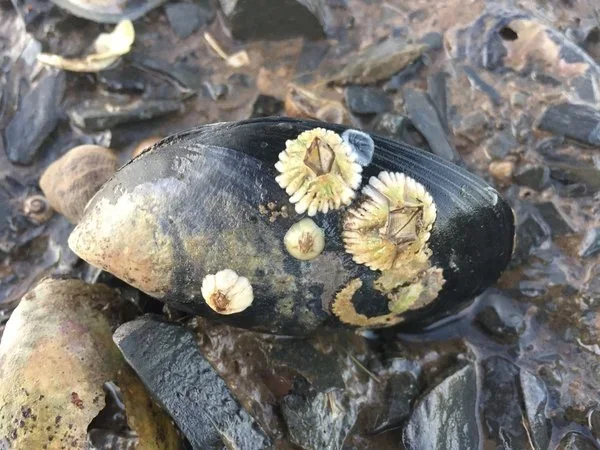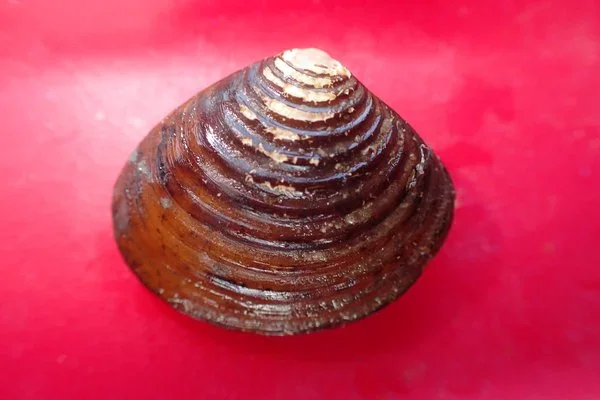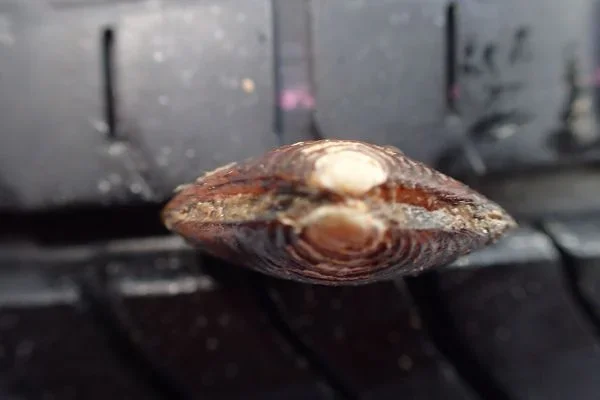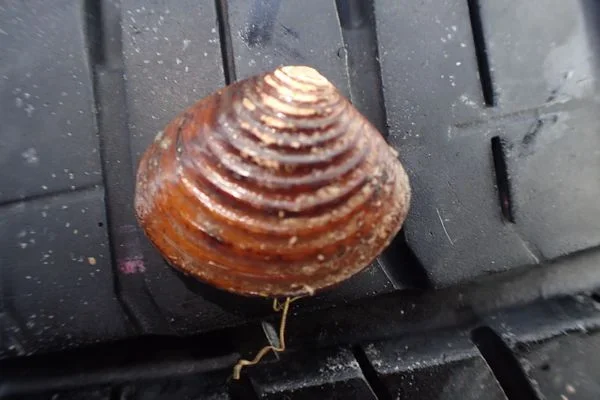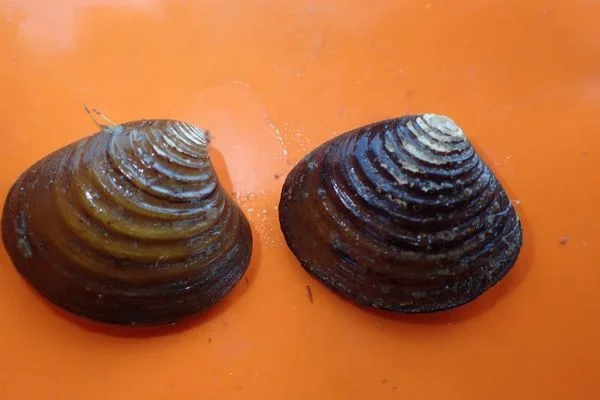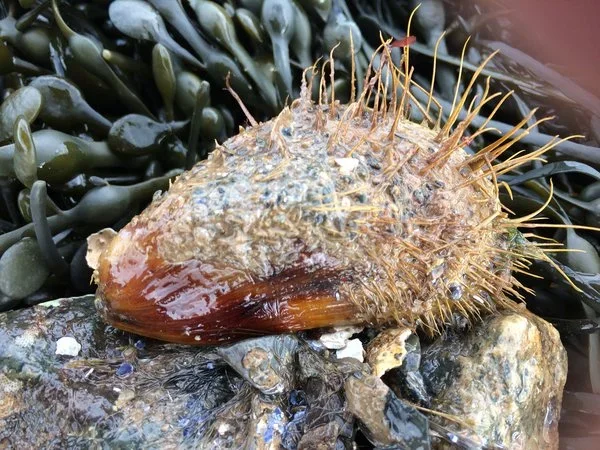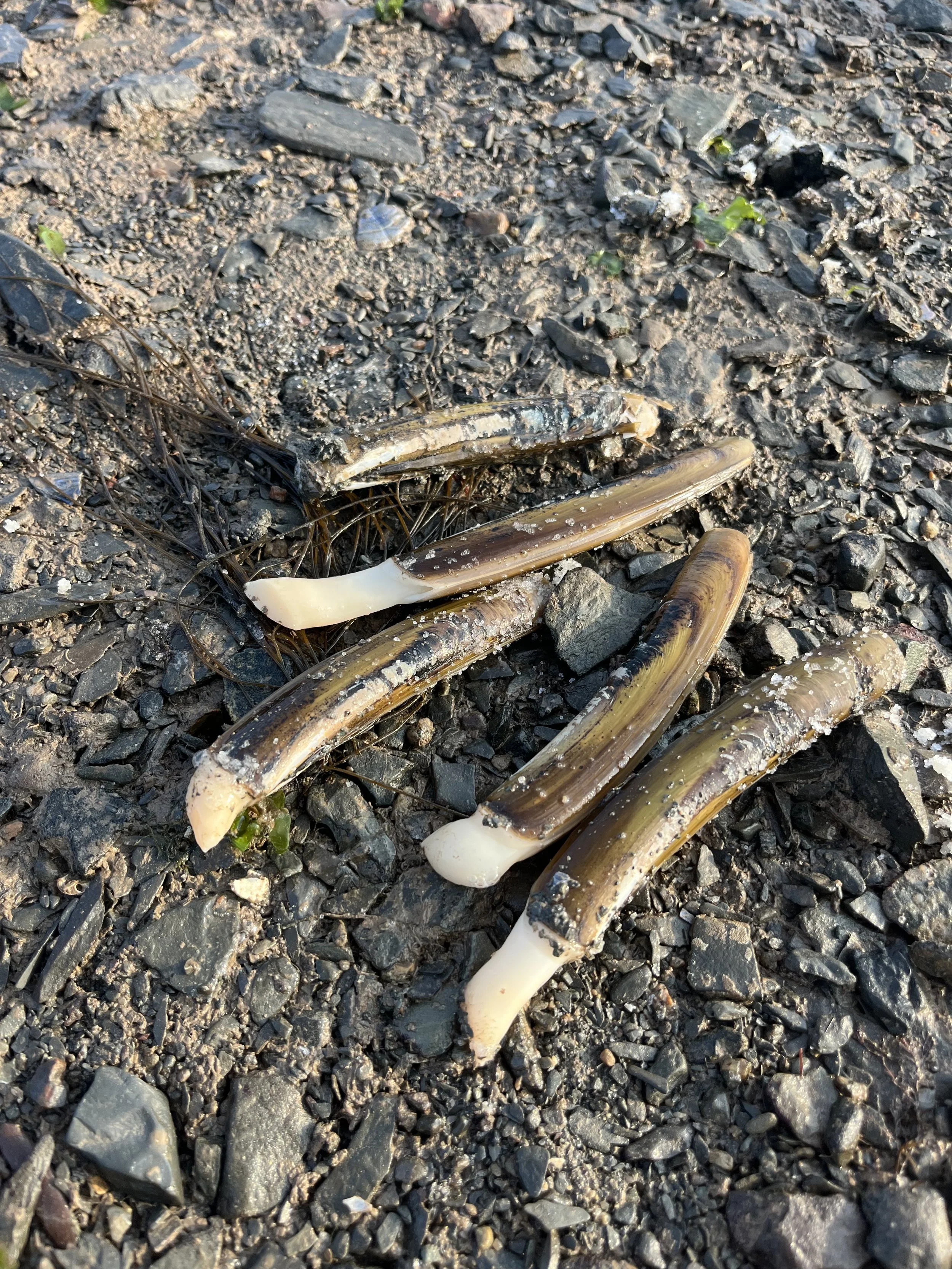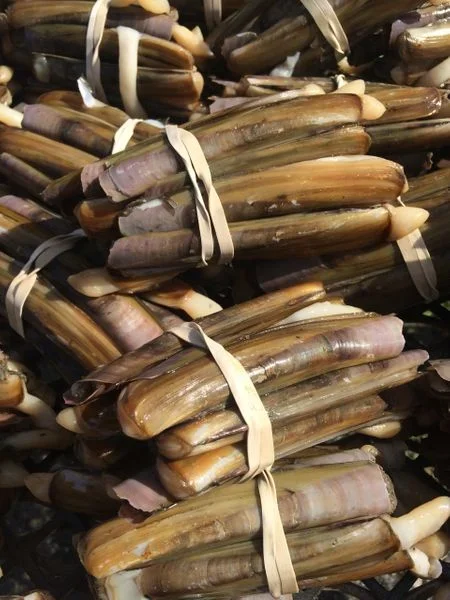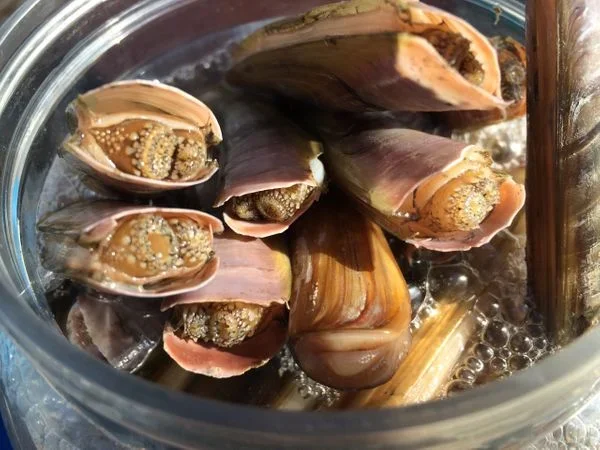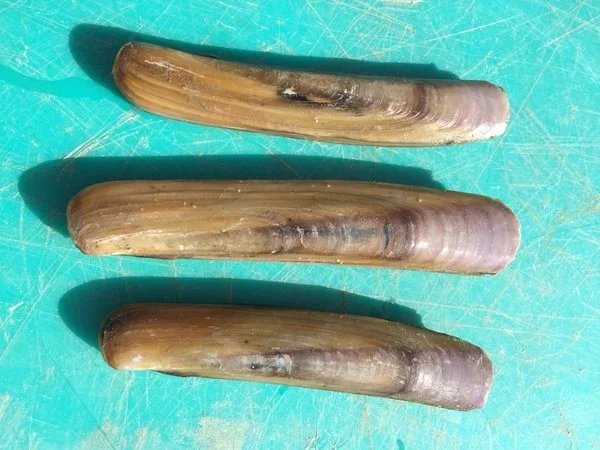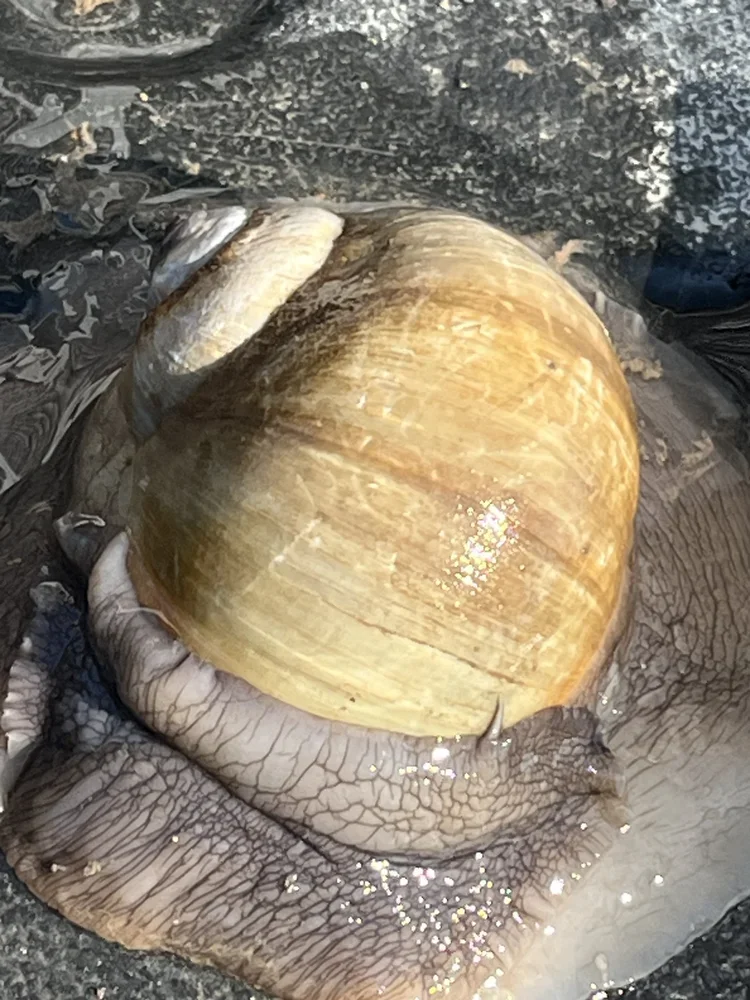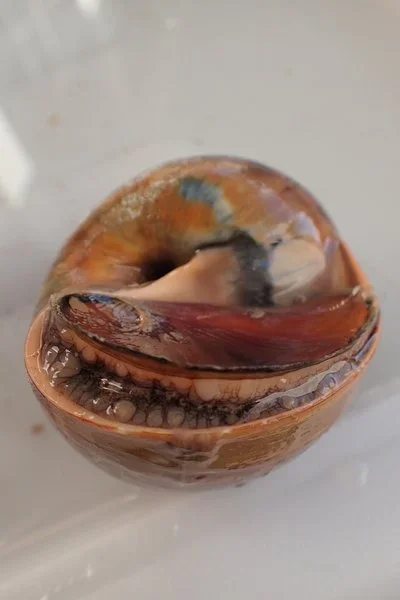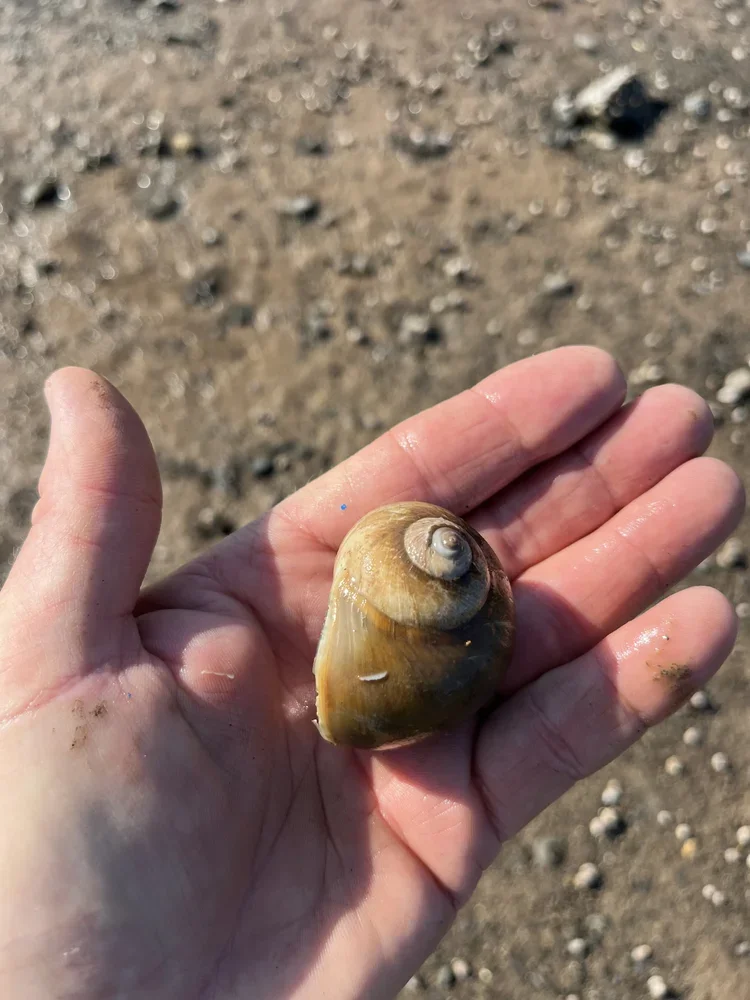Tidepool Tim says, "Blue mussels are a very important mollusk in the ecology of our Eastern Maine waters. These animals serve as key food source for sea stars, ducks, snails, & crabs. They serve as habitat for dozens of invertebrates including barnacles, slipper shells, sponges, worms, shrimp, and fish. They filter tons of plankton from the water and trap sediments as they form large masses or carpets across the seafloor literally glued together with their self-made fibers called byssal threads. Though they mostly live and feed in one place on the sea-floor they can actually move to new locations by use of these threads. In the summertime when we have visiting cousins or kid guests from the city we like to take them hunting for mussel pearls. At low water, we fill a bucket with the biggest, gnarliest looking mussels we can pry from the rocks. Back at home, we use small knives to cut open the shells and look for pearls. These pearls are a deep purple color and range in size from 1/16" of an inch up to 1/4". Some mussels have 6 or more pearls embedded in their tissues. Its great fun for all - a small pail of mussels can yield more than 100 pearls!”

